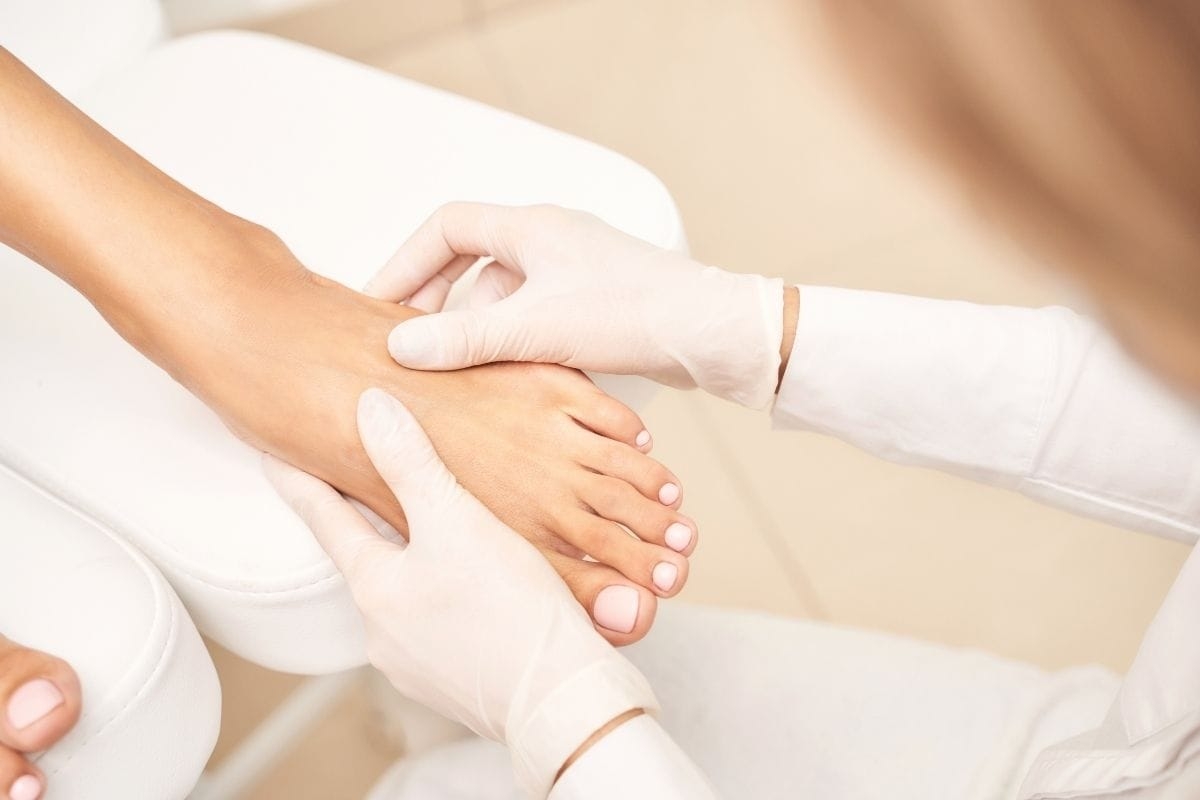
Here’s why it’s so important to take care of feet
By Rebecca Hitchon | 21 April 2023 | Expert Advice, Feature

The importance of footcare can be overlooked, particularly during colder weather when feet and toenails tend to be tucked into thick socks and closed-toe footwear.
But footcare services are not just beneficial for pedi season – foot and toenail issues can arise at any time of the year and treating them early can prevent further problems and even medical attention for the client down the line.
“Regular foot treatments not only have aesthetic importance, but they also aid comfort when walking, reducing painful calluses, relieving foot strains and taking care of tired skin and toenails,” reveals Magnetic Nail Design expert educator, Magda Gniewek.
“By advertising the benefits of regular foot treatments, we can benefit from footcare clients all year round.”

Magda Gniewek
Most clients will suffer with some kind of foot or toenail issue in their lifetime, whether that be dry or callused skin, toenail trauma such as ridged, damaged and ingrown nails, sports-related problems, or issues caused by pregnancy, menopause or conditions like diabetes.
That is why it is important to carry out a thorough consultation before any footcare service.
“A consultation is essential, whether the client is new or a regular. A thorough consultation with questions and observations allows you to prepare for your treatment and determines the products and techniques you’ll be able to use throughout,” explains Louella Belle educator, Clare Hooson.

Clare Hooson
Consultation checklist
Nailchemy educator, Pamela Brawn, reveals the key points to learn from a consultation. She notes that it is important to determine:
- Whether the client has an active lifestyle and if this includes sports involving the feet.
- Whether they have any existing medical conditions or are taking medication that may cause a contra-indication (a reason that restricts or prevents a pedicure treatment from being carried out.)
- Whether they have any allergies.
- What they use at home for their footcare (if this has not been recommended by you), helping you to gauge the type of products that do and don’t work well for them and that may affect the condition of their nails and feet.

Pamela Brawn
How to ensure a footcare treatment is hygienic
“Hygiene is the most important part of any treatment, especially pedicures,” comments Clare Hooson. “It’s important to remember that bacteria multiply very quickly. Imagine if a foot spa wasn’t cleaned efficiently between clients – think how much bacteria could be harbouring in there that could cause an infection.”
Disposables, from the gloves, face masks and aprons you wear to the files, towels and pedicure bowl liners you use, are key to preventing this bacterial growth, explains Pamela Brawn. For items that cannot be disposed of, such as metal tools, their disinfection in-between each client is crucial and should include heat treatment, along with sealing sanitised items into sterile packaging.
However, it is not just equipment that needs to be disinfected: sanitising clients’ feet is crucial as well. If a client’s feet have an unpleasant smell, this can be attributed to bacteria, which if not treated can thrive and become a potential health risk.
When and how to refer a client
There are situations where it may not always be suitable to treat a client and the help of a medical professional is required, for example if there is a nail or skin infection or if there is an open wound. Particular signs of infection that require referral include redness, swelling, discharge, pain and loss of function.
“As professionals, we should always use the 3 Rs,” says Clare Hooson.
Recognise – skin conditions and concerns.
Recommend – a service or product to help treat the condition.
Refer – to a specialist if it is necessary.
“If someone presents with a nail that you think is fungal, politely recognise this, say to your client: ‘do you see where your nail is discoloured here and very thick? It looks as though it could be fungal, so I recommend that we avoid/tailor this treatment. I would suggest referring you to see a GP or specialist for confirmation and further treatment of the nail’,” she continues.
“Covering the problem without any treatment will only further worsen the situation, but when referring we need to be super sensitive,” adds Magda Gniewek.” I usually say ‘because I don’t have the medical knowledge or tools to treat this specific condition, it is better to check it with a specialist’. It is a good practice to have a cooperating chiropodist, then you can refer your client to a place you know and trust.”

